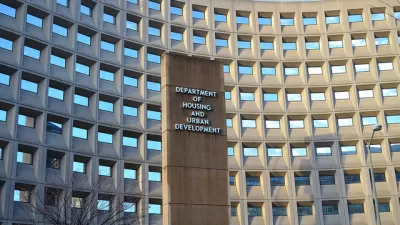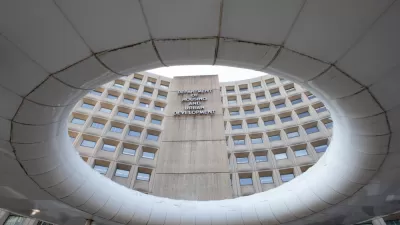The Department of Housing and Urban Development has released the details of the final rule for Affirmatively Furthering Fair Housing, which will give new strength to the goals set forth by the Fair Housing Act of 1968.
"The Obama administration announced an aggressive effort on Wednesday to reduce the racial segregation of residential neighborhoods," report Julie Hirschfeld Davis and Binyamin Appelbaum. "It unveiled a new requirement that cities and localities account for how they will use federal housing funds to reduce racial disparities, or face penalties if they fail."
According to Davis and Applebaum, the Obama Administration created the new Affirmatively Furthering Fair Housing rule "to enforce the goals of the civil rights-era fair housing law that bans overt residential discrimination," but have largely failed to prevent segregation. Included in the new effort is a promise by the Department of Housing and Urban Development to "make available a trove of data that local officials can use in deciding how they will address segregation and racially concentrated areas of poverty, rather than being told how they must meet the new goals." The article also notes the political divide provoked in response to the announcement—with civil rights organizations on one side and conservatives on the other.
Writing for the Urban Institute in a separate article, Solomon Greene and Erika C. Poethig provide their take on the Affirmatively Furthering Fair Housing rule, explaining its importance and commending HUD for taking steps toward addressing segregation and expanding opportunity.
The new rule follows shortly after a Supreme Court ruling that also strengthened the cause of the Fair Housing Act on the issue of disparate impact in Texas Department of Housing and Community Affairs v. The Inclusive Communities Project.
FULL STORY: Obama Unveils Stricter Rules Against Segregation in Housing

Study: Maui’s Plan to Convert Vacation Rentals to Long-Term Housing Could Cause Nearly $1 Billion Economic Loss
The plan would reduce visitor accommodation by 25,% resulting in 1,900 jobs lost.

North Texas Transit Leaders Tout Benefits of TOD for Growing Region
At a summit focused on transit-oriented development, policymakers discussed how North Texas’ expanded light rail system can serve as a tool for economic growth.

Using Old Oil and Gas Wells for Green Energy Storage
Penn State researchers have found that repurposing abandoned oil and gas wells for geothermal-assisted compressed-air energy storage can boost efficiency, reduce environmental risks, and support clean energy and job transitions.

Santa Barbara Could Build Housing on County Land
County supervisors moved forward a proposal to build workforce housing on two county-owned parcels.

San Mateo Formally Opposes Freeway Project
The city council will send a letter to Caltrans urging the agency to reconsider a plan to expand the 101 through the city of San Mateo.

A Bronx Community Fights to Have its Voice Heard
After organizing and giving input for decades, the community around the Kingsbridge Armory might actually see it redeveloped — and they want to continue to have a say in how it goes.
Urban Design for Planners 1: Software Tools
This six-course series explores essential urban design concepts using open source software and equips planners with the tools they need to participate fully in the urban design process.
Planning for Universal Design
Learn the tools for implementing Universal Design in planning regulations.
Ascent Environmental
Borough of Carlisle
Institute for Housing and Urban Development Studies (IHS)
City of Grandview
Harvard GSD Executive Education
Toledo-Lucas County Plan Commissions
Salt Lake City
NYU Wagner Graduate School of Public Service





























